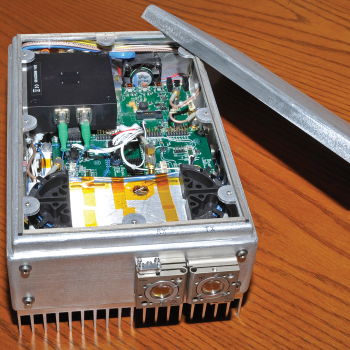Method and Kit for Stand-off Detection of Explosives

The detection of explosives is a critical matter for the safety and security of public places, military sites, airports, and many other locations. Traditional methodologies have employed techniques such as physical search, the use of sniffer dogs, or electronic machines to detect explosives. However, these traditional methods often expose the individual conducting the search or the machine scanning the scene to a potential explosion event. The principal problem with these approaches is the risk posed to human life and property in the event of an unexpected detonation. An additional challenge is the ability to detect explosives reliably without false positives, which can disrupt daily operations in public spaces. Moreover, these methodologies often do not offer remote detection capabilities. Hence, there is a clear necessity for a safer, more effective alternative to these conventional means.
Technology Description
The kit for detecting explosives includes a pulsed focused energy source located away from a targeted surface or substrate. This energy source has a magnitude potent enough to release the internal energy of any explosive substance if present on the substrate. The release of this internal energy consequently generates an acoustic wave. Furthermore, the kit includes a detector designed to identify these acoustic waves at a certain detection distance away from the substrate. One factor that differentiates this technology is its reliance on the generation and detection of acoustic waves for the identification of explosives. The method of employing a pulsed focused energy source is innovative, and its success in triggering an explosion does not rely on the physical interaction between the energy source and the explosive material. Instead, this technology uses the correlation between the energy released from explosives and the subsequent acoustic wave to identify the presence of explosives.
Benefits
- Improves security by reliably detecting explosives
- Reduces risk of unplanned detonations during detection
- Offers remote detection capability
- Limits disruptions by reducing false positives
- Protects personnel performing the detection task
Potential Use Cases
- Airport security for noninvasive detection of explosives in passenger luggage
- Military checkpoints for safe inspections of potential threats
- Subway and railway stations for mass-transit security measures
- Mail-room security to detect potential mail bombs
- Building access control to ensure the safety of people inside